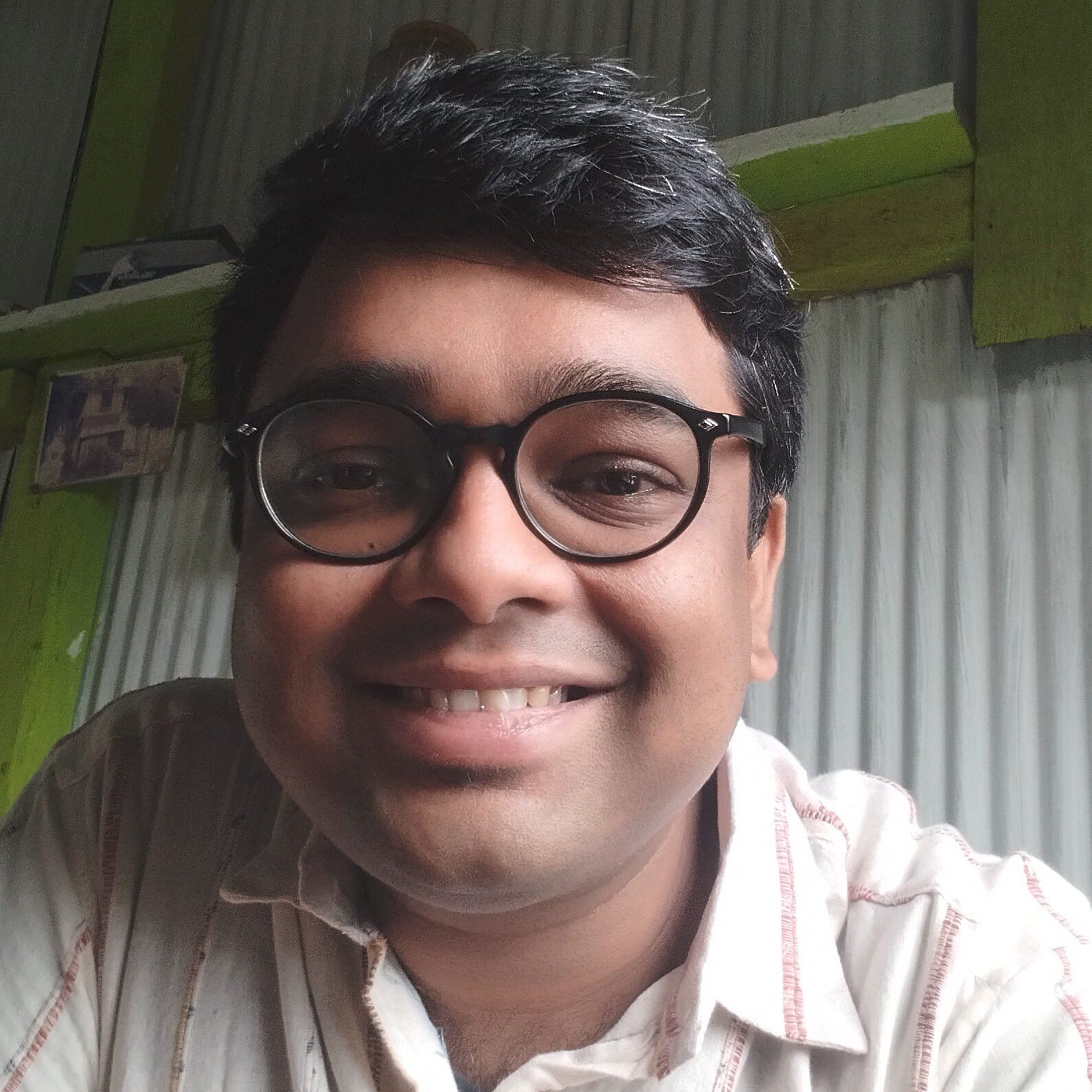ABOUT THE ARCHIVE
THE ARCHIVE'S RATIONALE
Prachetash Samaddar
In 2023, when discussions began regarding my grandfather’s birth centenary, the first question that arose in my mind was: what is the significance of a birth centenary? Whose birth centenaries are deemed worthy of celebration? A hundred years pass from one’s birth as a natural course of time. Yet, not everyone’s birth centenary is commemorated. Why, then, are we celebrating the birth centenary of Samaresh Basu?
The answer lies within the literature of Samaresh. More specifically, in the continued relevance of his writing in this day and age. I am neither a literary critic nor a historian — they will offer their interpretations in their own way. I speak simply as a reader who, after reading his work, turns to look at the world around me. And it is there that I find the answer.
Let me try to put forth my point forward through a small example- Samaresh’s very first short story, Adab, written in 1946. It tells the tale of a Hindu mill worker and a Muslim boatman in a riot-stricken city — a story of recognizing one another beyond the garbage heap of communal hatred. We have all read this story. But today, when I see my country and my state being consumed by the flames of communalism, I realize just how deeply relevant this story remains. Yet it raises a question: have we learned anything from it?
But beyond that question, lies something even more significant — through this story we get a glimpse into the soul of Samaresh’s literature: one which believes that common people who have the final word. Regardless of religion, caste, or political affiliation, he consistently spoke for the people in all his writings. He never lost faith in them; rather, he empowered them with the spirit to rise again. And it is precisely for this reason that to this date, the literature of Samaresh Basu remains profoundly relevant.
As we stand at this juncture of his birth centenary, we find ourselves looking back. We reflect upon the vast range of experiences that are interwoven throughout Samaresh Basu’s life and literature. But in the act of revisiting the past century, our thoughts have also turned toward the century that lies ahead. It is from this forward-looking perspective that the idea of this archive was born.
Samaresh Basu is a towering figure in Bengali literature — a giant banyan tree. But even the grandest banyan, over time, begins to wither; it becomes weathered, susceptible to decay. It, too, requires preservation and care. Our purpose is simply that — to preserve, to tend, and to protect. The idea of the Samaresh Basu Digital Archive was born out of this very need for preservation — the preservation of the memory of Samaresh Basu.
“Charity begins at home.” The idea of this archive began at a familial level — with the intent to preserve the documents and memorabilia we personally held of our grandfather: his photographs, letters, manuscripts, and more. Over time, many of these materials have deteriorated, and some have been lost altogether. But we thought it was the responsibility of this archive to safeguard what still remains.
And as we moved forward, others joined us — individuals who entrusted us with precious documents from their own personal or family collections, all deeply tied to the memory of Samaresh. These invaluable materials have now become a part of our archive.
However, preservation alone is not enough. The real essence of the archive lies in the stories and thoughts that emerge through these collections — the image they paint of Samaresh, the man and the writer. If those stories are not shared with others, the archive’s purpose remains incomplete.
Our goal has been to make this archive useful not only to researchers and academics but also to lovers of literature, students, and the next generation — so that they, too, can learn more about Samaresh and his work. That is why we created the website — and we have designed it in a way that, while grounded in the academic rigor of archival practice, it remains accessible and inviting, helping Samaresh’s legacy reach people across the globe.
METHOD & MATERIAL
Sampurna Chakraborty
The Samaresh Basu Digital Archive project was conceived in 2023, with the intent to preserve the family collection of Samaresh Basu’s photographs, letters, manuscripts, and notes. Like for most family collections, the material was scattered and unsystematic in its domestic storage and the initial primary aim was to consolidate and arrange these materials methodically. However, the vision and with it, the scope of archive building expanded as we surveyed through the collections within Samaresh Basu’s family and close associates.
Substantial gaps emerged in the range of the collected material while analysing it, and it was soon realised that in order to build an archive on Samaresh Basu, substantial research and documentation must be implemented. This research work began in early 2024, with researchers joining the team and expanding the project goals and deliverables.
There have been five objective stages to this project-
– First to identify, digitise and catalogue the germinal archival material which Samaresh Basu’s youngest daughter Mousumi Samaddar and his youngest son Udit Basu contributed towards the collection.
– Second leg of the research implemented extensive literature and bibliography survey to build a comprehensive catalogue of works by Samaresh Basu, as well as for works which have been done on him, like special editions, translations, monographs, research thesis and articles, as well as screen and stage adaptations.
– The third research thrust in building this archive has been to reach out to individual collectors and close associates of Samaresh Basu, which led to significant additions to the collection scope of the archive.
– The fourth crucial process was to design the archival classification and points of access, where every kind of virtual visitor can access and learn about the life and literature of Samaresh Basu. The metadata of the entire cataloguing has been prompted by the Dublin Core standards, with certain improvisations to simplify the information structure for the interface.
– The fifth and a decisive consideration in the project was to present the archive in a bilingual configuration, to maximise access and the knowledge sharing process, and encourage future interdisciplinary research and translation works.
The central vision of the Samaresh Basu Digital Archive is to make records and literary range of Samaresh Basu accessible to the world. The second key vision of the archive is to expand the visibility of vernacular literature where literary archives can play an interlocutory role for the younger generation of readers, as well as researchers. Going forward, the Samaresh Basu Digital Archive will continue its work on expanding the archival collection, and improving the fields of metadata prompted by the diverse themes which emerge from the author’s oeuvre. In the imminent future, the archive intends to facilitate a working structure for other such individual author-centric archives which emerges from family collections, since the Samaresh Basu Digital Archive is the first private and vernacular literary archive of its kind for free public access in the country.
ARCHIVES OF LITERATURE
Sujaan Mukherjee
I had read somewhere that T.S. Eliot had requested that no “life of the poet” be written for him after his passing. Biographers and literary historians interpreted this to mean that Eliot did not wish for his life to narrativized as merely that of a poet. So, it was acceptable to write a biography of the man, as he lived his life, earned his bread and worked on his craft.
For me, reading biographies of writers and painters, musicians and actors, changed for good after this. Beyond what someone creates, beyond what is printed as their work, there is so much more to the lives of artists that make up who they are. The age of reading literature only through the published word, or regarding art as only that which hangs framed on a wall has long gone, and we know now that questions of readership, patronage, personal struggles, all play a significant part in our understanding not just of individuals but of the discourses within which they are situated.
Having access to someone’s archive can add significant nuance to how we read them. The profusion of biographical information on Rabindranath Tagore, reflected in letters, personal effects, photographs and manuscripts, offer layers of understanding that would not be available if we regard only the published works. But Rabindranath is a bit of an exception in the history of Bangla literature; not everyone is quite so fortunate. The culture of building personal archives has not been our strong suit in this part of the world, although of late, there have been some efforts on the part of both institutions and families. I have been fortunate to see from up close and work on a few such archives at the School of Cultural Texts and Records at Jadavpur University and the Hitesranjan Sanyal Memorial Archives at the Centre for Studies in Social Sciences, Calcutta. There is always a perpetual sense of urgency about these projects, as people work on meagre resources against the ticking clock.
The archive of literature may, however, intersect with the digital in different ways. At the most basic level, the physical material (manuscripts, letters, photographs) may be photographed to create digital surrogates. These surrogates, unless decoded for the computer, do not become machine-readable. Metadata, that is data about the data, must be typed in painstakingly, so that future users are able to find their way around the documents.
The secondary level is open to interpretation. Some may choose to make the data itself machine-readable through optical character recognition or similar processes. This enables digital analysis of texts. Perhaps the most substantial example of this in the world is the Bichitra project, spearheaded by Prof. Sukanta Chaudhuri. Digital Humanities projects such as these can create tools that enable experts in the field to bring large quantities of data under their analytical lens through machine-reading.
Depending on the nature of the material, archives may also choose to create publicly accessible repositories that offer an easy entry point into the life and work of an author. The Samaresh Basu archive stands as a fine example of that, with careful, thoughtful curation both at the level of material selection and presentation. Apart from the archival material, which includes, photographs, manuscripts, letters and memorabilia, the archivists have taken the trouble to create useful bibliographies and a timeline, allowing even the lay user to get a clear understanding of this towering literary figure.
Speaking for myself, the achievement of the present archive can be measured in two ways. The first is on its own terms, that is, whether the selection of material, curation and presentation is making for an informative and easy experience for users of all persuasions. Secondly, I would hope that the effort put in by the author’s family serves as a model for other similar projects. It is only when stakeholders come together that such dreams can be achieved, and building archives for public consultation (specialized and non-specialzied use) goes a long way in sustaining literary legacies.
THE TEAM

Prachetash Samaddar
Founder, Samaresh Basu Digital Archive
Prachetash is Samaresh Basu’s grandson (son of Samaresh’s youngest daughter Mousumi Samaddar). This project was conceived by him and started out with the aim of preserving his family collection. He is a keen enthusiast of storytelling in its different forms, and aims to bring forward the story of Samaresh’s life and work, beyond the boundaries of academic rigours through this archive. He is a management consultant by profession and divides his time between Santiniketan, Kolkata and London.

Dr. Sampurna Chakraborty
Chief Archivist, Samaresh Basu Digital Archive
Sampurna Chakraborty is an art historian and archivist, working in the field of south Asian art and institutional histories, art pedagogy, art historiography and archival modes and histories. She is an alumna of Kala Bhavana-Visva Bharati, specialising in History of Art and has completed her PhD research as a JRF fellow from the Centre for Studies in Social Sciences, Calcutta-Jadavpur University. Her exhibition reviews, articles and research essays are regularly published in national and international platforms. Sampurna currently works as the Archival and Documentation Officer at the Benode Behari Mukherjee Archives & Research Centre, Kala Bhavana-Visva Bharati.

Dr. Sujaan Mukherjee
Archive Designer, Samaresh Basu Digital Archive
Sujaan Mukherjee is Senior Curator at the Birla Academy of Art and Culture, Kolkata. He enjoys researching and writing on art, literature and cities. He completed his PhD as a SYLFF fellow at Jadavpur University and postdoc at the CSSSC as a Mellon Foundation fellow. A two-time IFA awardee, Sujaan has worked with several archives and museums, including DAG’s museums initiative, Victoria Memorial Hall, SCTR (JU), JBMRC (CSSSC), and Gurusaday Museum. He translates and has published bilingually in academic and public platforms alike.

Aryama Bej
Research Assistant, Samaresh Basu Digital Archive
Aryama Bej is an independent researcher and aspires to be a classical dancer. Besides performing, she is interested in dance studies, theatre, literature, and art pedagogy. She completed both her graduation and post-graduation in English from Jadavpur University. She has previously worked at the IIM (Kolkata), DAG, and is currently a Research Assistant at the Hemango Biswas Archive Project. She will be joining the doctoral program in Theatre and Performance Studies at Florida State University.

Sudarshana Banerjee
Research Assistant, Samaresh Basu Digital Archive
Sudarshana Banerjee is a doctoral candidate at the School of History, University of St Andrews. Her research interests include transnational, intellectual and connected histories, with a particular focus on the flows of ideas, texts, and knowledge across geographical and cultural boundaries. She also has an interest in histories of Bengali print culture and juvenile literature. She has completed her Bachelor’s, Master’s, and MPhil degrees in History from Jadavpur University, Kolkata.

Sumantra Baral
Research Assistant, Samaresh Basu Digital Archive
Sumantra Baral is an independent researcher interested in studying visual arts, print culture, and literature. He completed his M.Phil. in English from Jadavpur University. He has been part of various archival projects in SCTR (JU), JBMRC (CSSSC), and P.C. Joshi Archive (JNU). He writes both in English and Bangla. He will be joining the doctoral program in Comparative Literature as a SPARKS Fellow at The Pennsylvania State University.
CONTRIBUTE
Do you have any material that relates to Samaresh Basu’s life and work? Please reach out to us in case you do, and even if you are unsure whether some material might relate to the author. This archive could not have been possible without contributions from a number of people and, as such, we are eager to envision it as a repository that is open to contributions from all quarters.
To reach out, please write to us at <samareshbasudigitalarchive [at] gmail.com>.
